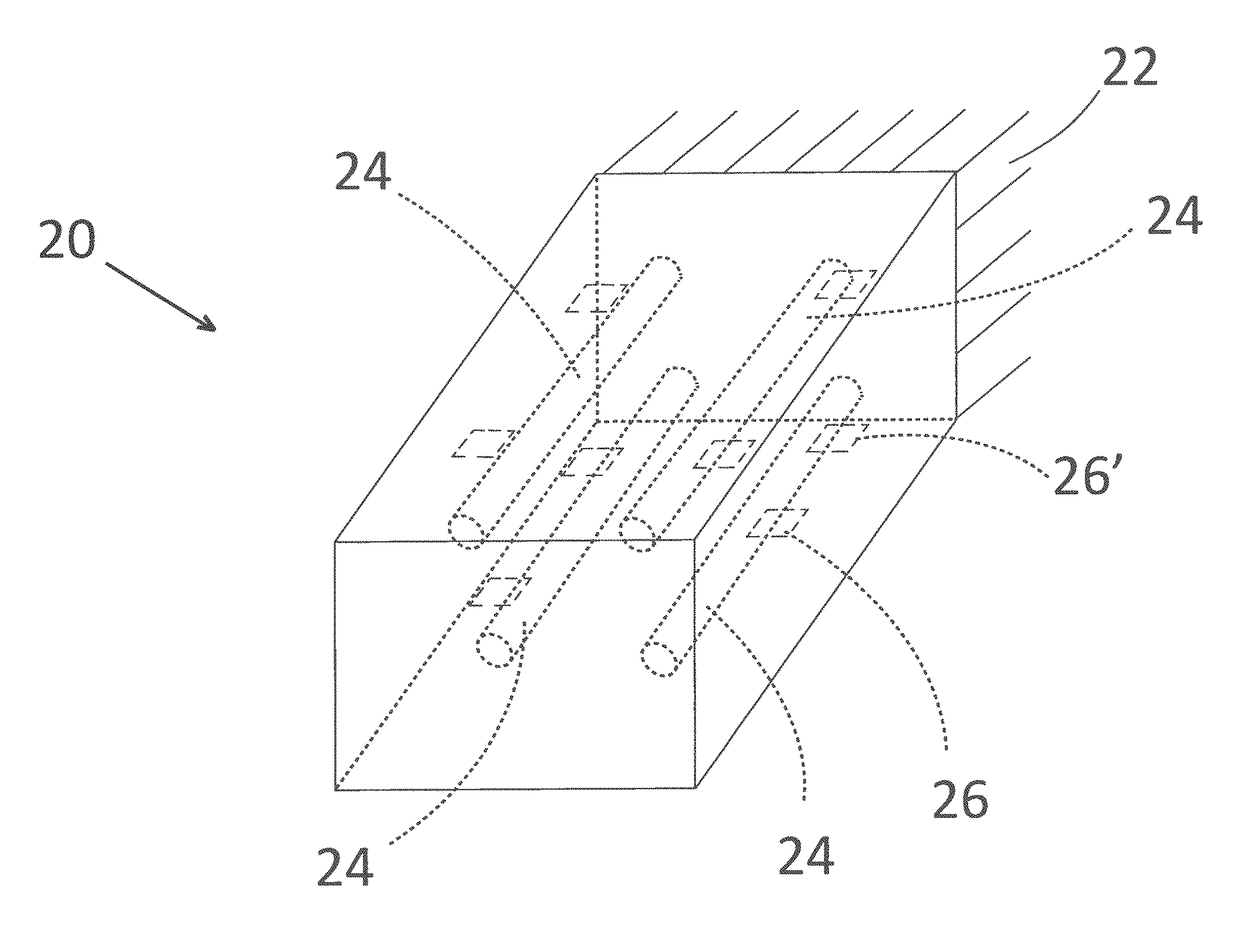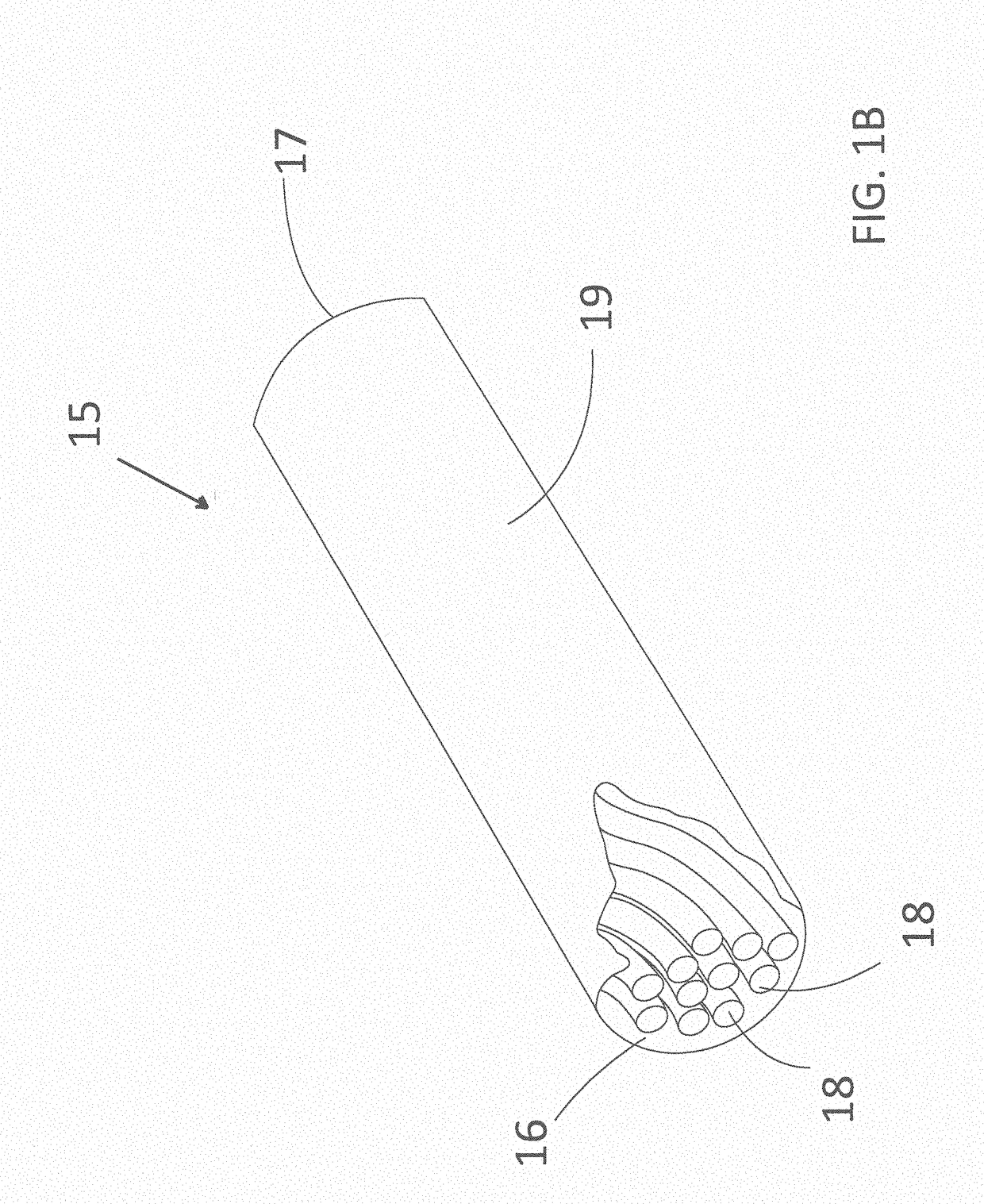Dry friction damped mechanical and structural metal components and methods of manufacturing the same
- Summary
- Abstract
- Description
- Claims
- Application Information
AI Technical Summary
Benefits of technology
Problems solved by technology
Method used
Image
Examples
Embodiment Construction
[0034]In the following figures, the same reference numerals will be used to refer to the same components. In the following description, various operating parameters and components are described for different constructed embodiments. These specific parameters and components are included as examples and are not meant to be limiting.
[0035]The accompanying figures and the associated description illustrate the construction and use of vibration-damping ropes according to the disclosed inventive concept. Particularly, FIGS. 1A, 1B and 2 illustrate the vibration-damping rope itself. FIG. 3 illustrates the vibration-damping rope used in a generic component. FIGS. 4A-6B illustrate the vibration-damping rope employed in a brake rotor as an example of how the rope can be used in a component to dampen vibration. FIGS. 7-10 illustrate the vibration-damping rope employed indirectly in an engine block by way of first being formed as part of an insert. The insert is thereafter incorporated into the ...
PUM
| Property | Measurement | Unit |
|---|---|---|
| Melting point | aaaaa | aaaaa |
| Stress optical coefficient | aaaaa | aaaaa |
| Distribution | aaaaa | aaaaa |
Abstract
Description
Claims
Application Information
 Login to View More
Login to View More - R&D
- Intellectual Property
- Life Sciences
- Materials
- Tech Scout
- Unparalleled Data Quality
- Higher Quality Content
- 60% Fewer Hallucinations
Browse by: Latest US Patents, China's latest patents, Technical Efficacy Thesaurus, Application Domain, Technology Topic, Popular Technical Reports.
© 2025 PatSnap. All rights reserved.Legal|Privacy policy|Modern Slavery Act Transparency Statement|Sitemap|About US| Contact US: help@patsnap.com



